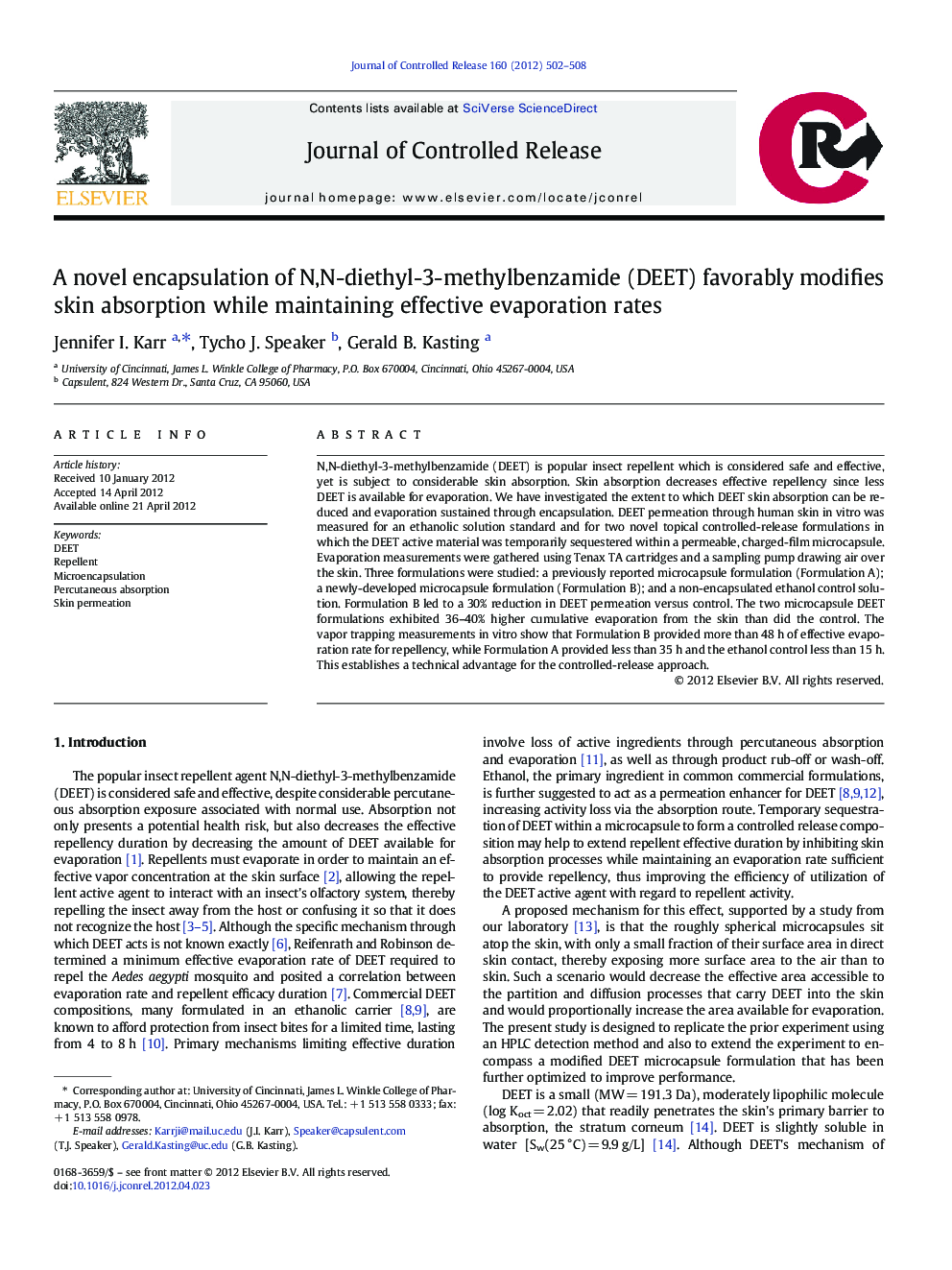| کد مقاله | کد نشریه | سال انتشار | مقاله انگلیسی | نسخه تمام متن |
|---|---|---|---|---|
| 1424498 | 1509079 | 2012 | 7 صفحه PDF | دانلود رایگان |

N,N-diethyl-3-methylbenzamide (DEET) is popular insect repellent which is considered safe and effective, yet is subject to considerable skin absorption. Skin absorption decreases effective repellency since less DEET is available for evaporation. We have investigated the extent to which DEET skin absorption can be reduced and evaporation sustained through encapsulation. DEET permeation through human skin in vitro was measured for an ethanolic solution standard and for two novel topical controlled-release formulations in which the DEET active material was temporarily sequestered within a permeable, charged-film microcapsule. Evaporation measurements were gathered using Tenax TA cartridges and a sampling pump drawing air over the skin. Three formulations were studied: a previously reported microcapsule formulation (Formulation A); a newly-developed microcapsule formulation (Formulation B); and a non-encapsulated ethanol control solution. Formulation B led to a 30% reduction in DEET permeation versus control. The two microcapsule DEET formulations exhibited 36–40% higher cumulative evaporation from the skin than did the control. The vapor trapping measurements in vitro show that Formulation B provided more than 48 h of effective evaporation rate for repellency, while Formulation A provided less than 35 h and the ethanol control less than 15 h. This establishes a technical advantage for the controlled-release approach.
Microcapsule Formulation B maintained an evaporation rate above that reported to repel Aedes aegypti mosquitos for over 48 h in vitro, more than three times longer than the ethanol control.Figure optionsDownload high-quality image (108 K)Download as PowerPoint slide
Journal: Journal of Controlled Release - Volume 160, Issue 3, 28 June 2012, Pages 502–508